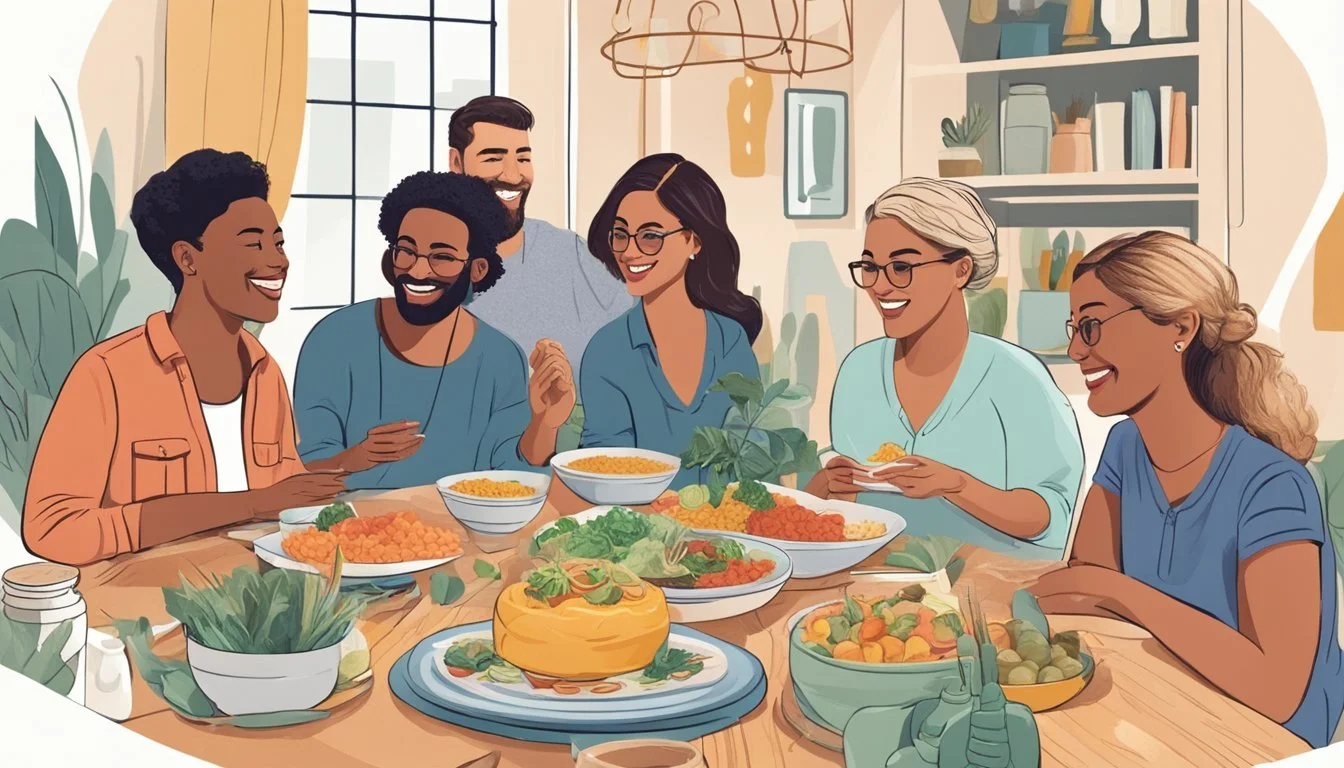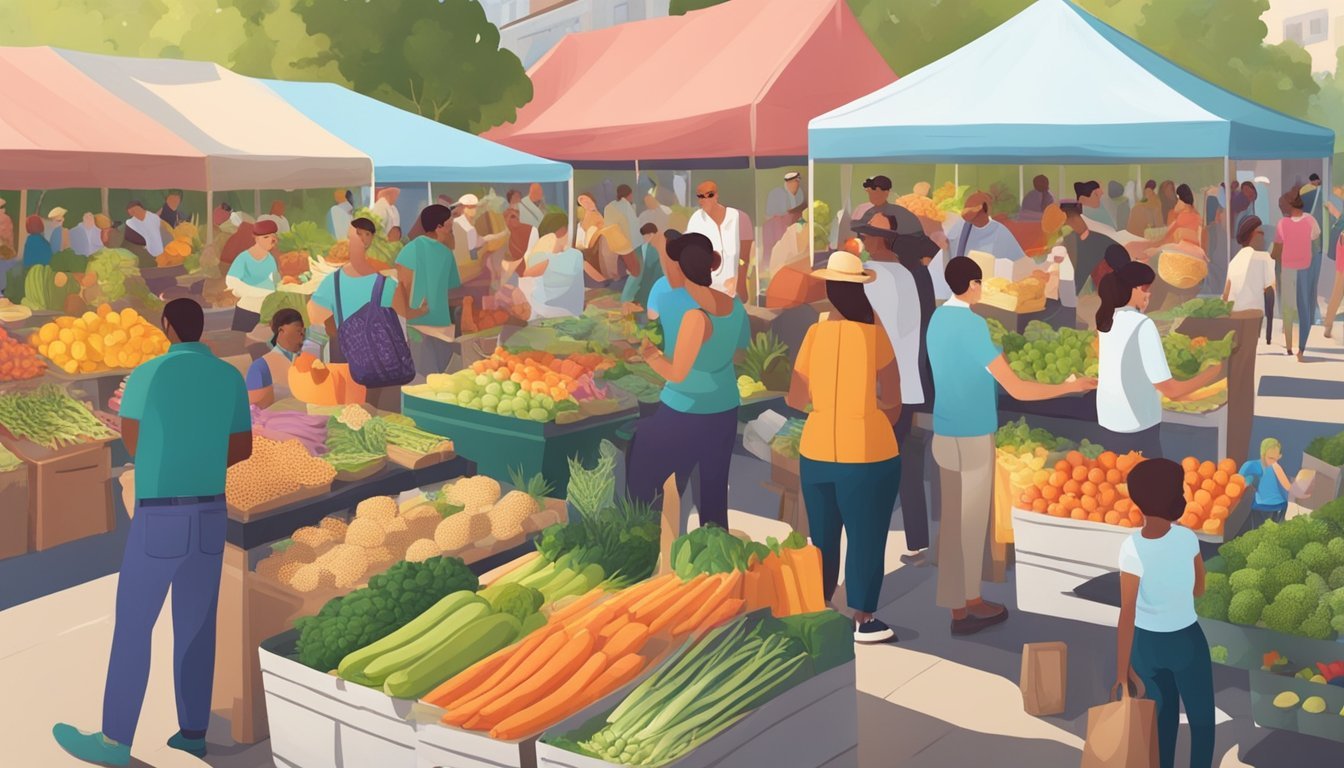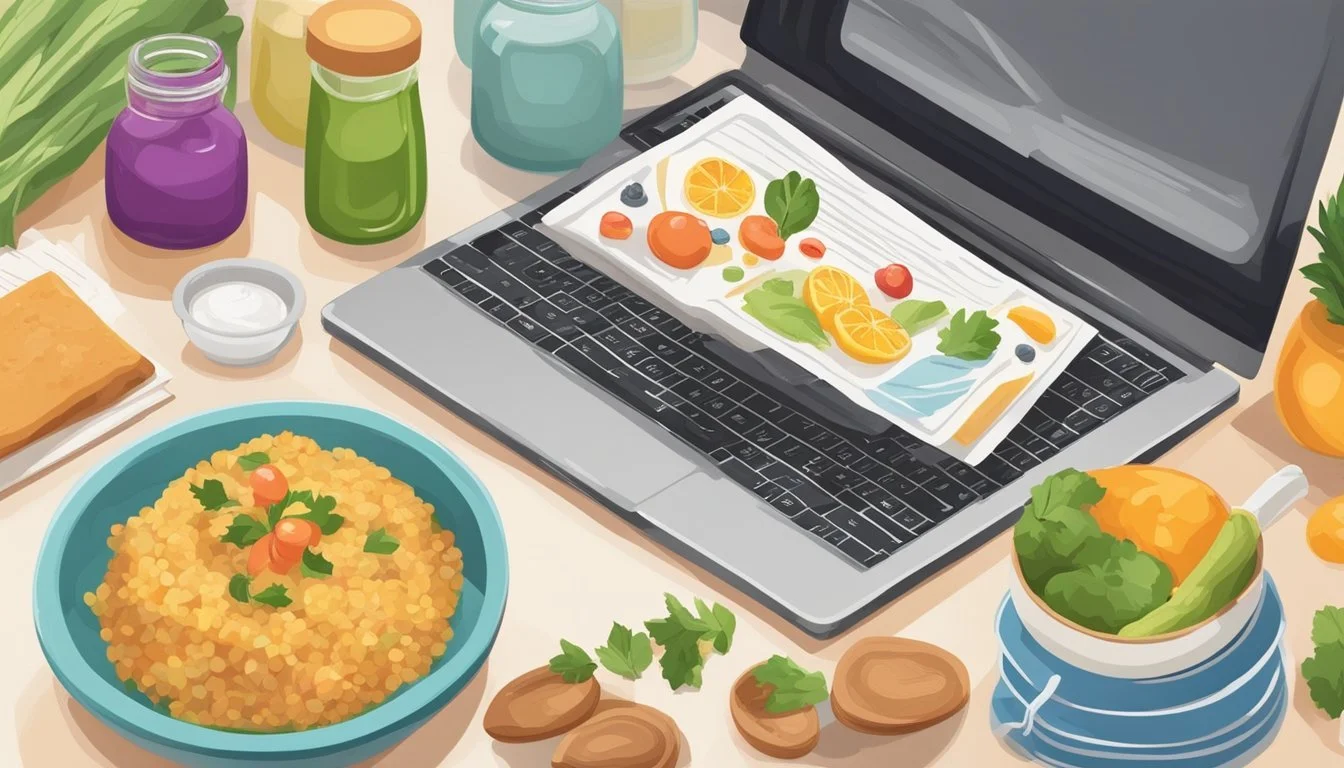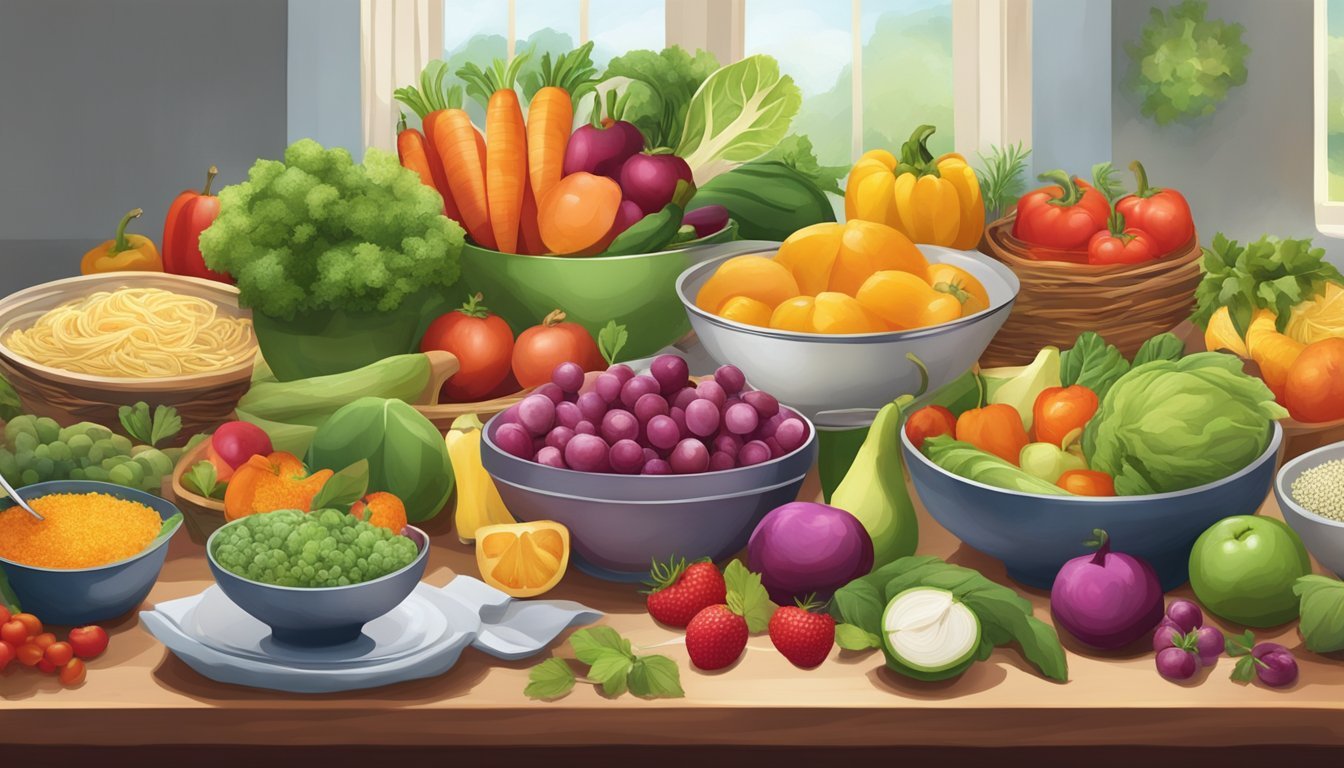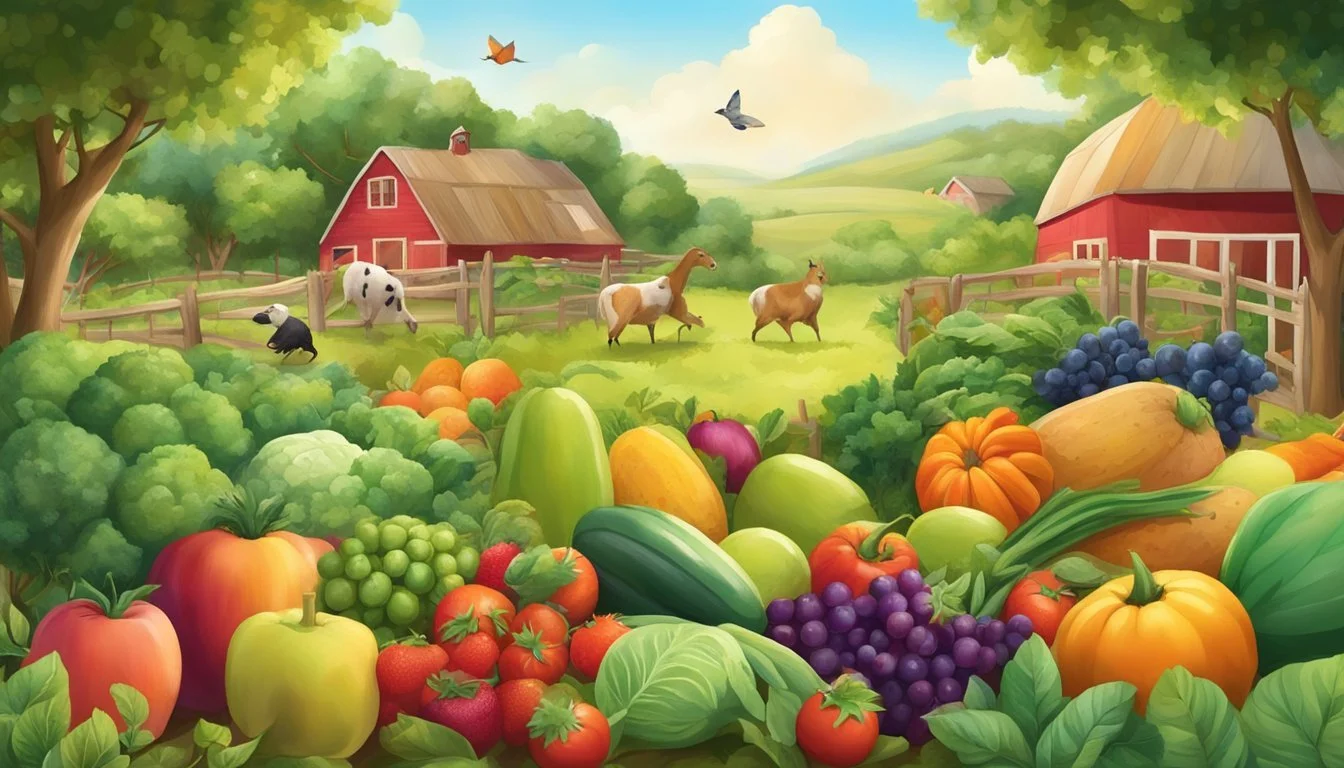The Top Grain-Free Food Bloggers to Follow for Creative and Healthy Meal Ideas
Embracing a grain-free lifestyle can be a transformative experience that leads individuals toward enhanced health and well-being. Numerous food bloggers have taken it upon themselves to create and share a myriad of grain-free recipes and nutritional insights, providing valuable resources for those seeking to navigate this dietary path. These bloggers often bring a combination of professional nutrition expertise and personal experience to the table, offering a blend of guidance that is both authoritative and relatable for the home cook.
For individuals looking to integrate grain-free options into their diets, following these food bloggers can offer daily inspiration and practical advice. These blogs not only showcase creative recipes but also emphasize the importance of whole, unprocessed foods within a healthy lifestyle. With careful attention to nutritional needs and an inventive culinary approach, these bloggers have made grain-free eating both accessible and enjoyable.
Whether through detailed recipe posts, informative nutritional tips, or guidance on maintaining a healthy lifestyle, these grain-free food bloggers serve as a cornerstone for anyone interested in exploring the benefits of a grain-free diet. Beyond providing palatable alternatives, they serve as advocates for a conscious approach to eating, which resonates with individuals looking to make informed choices about their food and their health.
When seeking creative and healthy meal ideas, turning to the top grain-free food bloggers can provide a wealth of inspiration and culinary innovation. These bloggers offer a diverse array of recipes and meal plans that cater to various dietary needs and preferences, including those with grain-free food allergies sensitivities. Their inventive use of grain-free healthy fats and alternatives like grain-free crackers chips showcases a flavorful and health-conscious approach to snacking and meal preparation.
Whether it's crafting a satisfying grain-free lunch, curating a well-rounded grain-free balanced meal plan, or exploring inventive dishes like grain-free sushi, these bloggers offer a treasure trove of ideas. Their creative recipes provide delicious alternatives that may help manage grains sugar cravings while embracing a grain-free lifestyle.
By following these top grain-free food bloggers, individuals can discover a world of culinary creativity and nourishing meal ideas that align with their dietary preferences. Their innovative approach to grain-free cooking opens up a world of possibilities for those seeking to embrace a flavorful and health-conscious grain-free diet.
Benefits of Going Grain-Free
Adopting a grain-free diet can lead to potential health benefits, cater to specific dietary plans such as paleo or vegan, and encourage a whole food-focused lifestyle. This section explores the multifaceted advantages individuals may experience.
Health Advantages
On a grain-free diet, many individuals find that they experience reductions in inflammation, particularly beneficial to those with autoimmune diseases or inflammatory conditions. Nutritionists often recognize the potential for a grain-free diet to aid in digestive health, as it eliminates gluten, which can cause discomfort in those with gluten sensitivities or celiac disease. By focusing on a diverse range of proteins and fats, people may also notice an improvement in their fitness levels and overall feelings of health.
Inflammation: A decreased intake of certain grains may lower inflammation markers.
Digestive Health: Those with gluten intolerance can see improvements by avoiding grain-based products.
Fitness and Health: A well-planned grain-free diet can support healthy body composition and energy levels.
Special Diets: Paleo, Vegan, and Vegetarian
Paleo followers often avoid grains as they focus on a pre-agricultural, hunter-gatherer diet. A grain-free approach can also be aligned with vegan or vegetarian practices, with attention to plant-based proteins like legumes, tofu, and tempeh. These diets value the exclusion of processed foods and the inclusion of natural, whole food sources which may enhance nutrient density and reduce exposure to food additives and preservatives.
Paleo: Emphasizes meat, vegetables, nuts, and seeds, while excluding grains.
Vegan/Vegetarian: Can opt for grain alternatives such as legumes and fermented soy products.
Whole Food Focus: Prioritizes fresh, unprocessed foods that are inherently dairy-free and often gluten-free.
All About Whole Foods
Embracing whole foods means choosing minimally processed options that are often more nutrient-dense than their refined counterparts. Those on a grain-free diet naturally gravitate towards fruits, vegetables, nuts, seeds, and animal products like meat and eggs, or dairy alternatives, ensuring a rich intake of vitamins, minerals, and other essential nutrients. This focus on whole foods supports a healthy lifestyle, encouraging individuals to select foods that contribute to their well-being.
Nutrient Density: Whole foods provide an array of essential nutrients without added fillers.
Health Support: A variety of whole foods support different aspects of health, including immune function and energy levels.
Popular Grain-Free Food Bloggers
In this section, readers will discover a curated selection of food bloggers who specialize in grain-free diets. These bloggers provide insights into Paleo, vegan, and vegetarian lifestyles, offering an array of innovative and health-oriented recipes.
Leaders in the Paleo Community
The Paleo Mom: Dr. Sarah Ballantyne, the face behind The Paleo Mom, provides a scientific approach to the Paleo lifestyle. She offers an extensive collection of gluten-free recipes and resources to help individuals with autoimmune disorders.
Nom Nom Paleo: Michelle Tam is known for her flavorful Paleo recipes that make grain-free living enjoyable. Nom Nom Paleo stands out with its variety of creative recipes that are simple to follow and accompanied by vibrant photography.
Influential Vegan Bloggers
Cookie and Kate: Kate, a well-respected food blogger, shares a wide range of vegan recipes that are not only delicious but also focus on whole foods and plant-based ingredients. Her blog emphasizes the importance of a healthy vegan lifestyle.
Veganosity: This blog merges the vegan lifestyle with comforting, familiar recipes. Readers can find a treasure trove of recipes that utilize innovative meat replacements to create satisfying plant-based dishes.
Creative Vegetarian Cuisine Proponents
101 Cookbooks: Heidi Swanson focuses on natural foods and provides a plethora of vegetarian recipes. Her blog is a go-to for readers seeking plant-based recipes that are both healthful and inventive.
Healthy Recipes Blogs: Offering a diverse collection of gluten-free vegan and vegetarian options, this blog is for those looking to maintain a nutritious, grain-free diet without sacrificing taste or creativity.
Cooking Techniques and Kitchen Tips
Achieving culinary success in a grain-free kitchen hinges on mastering specific techniques and understanding how to optimize your use of kitchen tools. The following subsections provide guidance on baking without grains, selecting essential kitchen equipment, and presenting your creations with professional-level food photography.
Mastering Grain-Free Baking
Grain-free baking often involves alternatives like almond flour or coconut flour, which react differently than traditional wheat flour. A chef may recommend using a blend of grain-free flours to achieve the right texture. Binding agents like eggs or chia seeds can substitute for gluten to help baked goods hold together. Precise measurements are crucial, as grain-free ingredients can drastically alter a recipe's outcome.
Common Grain-Free Baking Ingredients:
Almond flour
Coconut flour
Tapioca starch
Eggs
Unrefined sugars
Kitchen Essentials for the Grain-Free Cook
A well-stocked grain-free kitchen includes a variety of fats and oils, such as butter, ghee, or coconut oil, to add richness and moisture to dishes. An instant pot can be a grain-free cook’s ally, providing the ability to cook dishes like stews and curries that are naturally free from grains. An array of silicone bakeware aids in preventing sticking without the need for traditional flour-based dusting.
Must-Have Tools:
High-quality food processor
Instant Pot
Silicone bakeware and molds
Heavy-duty mixing bowls
Measuring cups and spoons for accuracy
Food Presentation and Photography
Presentation transforms a dish from simple to spectacular. Use garnishes to add color and texture, thereby enhancing the visual appeal. As for photography, natural lighting and a quality camera are fundamental. A food blogger can captivate their audience by showcasing the vibrant hues and textures unique to grain-free ingredients, like the creaminess of coconut milk or the richness of various nuts and seeds.
Food Photography Tips:
Utilize natural light for a soft, inviting aesthetic.
Include kitchen tools or raw ingredients in the frame for context.
Experiment with angles to highlight the textures of the food.
Incorporating International Flavors
Exploring grain-free food doesn't mean confining oneself to the traditional palette. Many food bloggers are expanding the horizons of grain-free cooking by infusing dishes with international flavors and spices like turmeric and cinnamon.
Travel-Inspired Dishes
When travelers return from an adventure, they often bring back more than just souvenirs; they carry flavors, scents, and memories of meals enjoyed across the globe. Grain-free bloggers are no different, sharing travel-inspired recipes that satisfy the wanderlust in those unable to venture far. For example:
Turmeric-infused Thai Curry: A vivid dish utilizing the earthy spice commonly found in Southeast Asia.
Mexican Cinnamon Chicken: A sweet twist on a savory favorite, infused with cinnamon to create a unique depth of flavor.
Cultural Influences in Grain-Free Cooking
Culture deeply influences cuisine, and food bloggers often pay homage to different cultures by integrating authentic flavor combinations into grain-free cooking. They reach into the heart of a culture's culinary traditions and adapt them for those following a grain-free lifestyle. Examples include:
Italian Zucchini Pasta: Reinventing pasta night using spiralized vegetables paired with robust Italian spices.
Indian Spiced Cauliflower Rice: A low-carb alternative to traditional biryani, packed with aromatic spices.
Food blogs are a valuable source for anyone looking to include international tastes into their grain-free diet, ultimately leading to a more enjoyable and varied cooking experience.
Maintaining a Budget While Eating Grain-Free
When adopting a grain-free lifestyle, many worry about the impact on their grocery bills. However, with strategic shopping and meal preparation approaches, one can enjoy a diverse menu while adhering to a budget.
Cost-Efficient Shopping for Ingredients
Buying in Bulk: Purchasing staples like legumes, nuts, and seeds in bulk can lead to significant savings. Home cooks should look for bulk-bin sections at grocery stores, where items are often priced lower than their packaged counterparts.
Seasonal Produce: Shopping for seasonal fruits and vegetables not only ensures freshness but can also reduce costs. These items are generally more abundant and less expensive when in season.
Store Brands and Sales: Opting for store-brand products over name brands can save money. Additionally, keeping an eye on weekly sales and planning menus around these deals can lower expenses.
Prioritizing Whole Foods: Emphasizing whole foods over processed items not only benefits one's health but can also be more budget-friendly, as whole foods tend to be less expensive per nutrient than their processed equivalents.
Table 1: Comparison of Average Costs
Item Type Average Cost of Whole Foods Average Cost of Processed Items Protein Lower Cost per Serving Higher Cost per Serving Vegetables Seasonal Pricing Standardized Pricing Nuts/Seeds Bulk Pricing Packaged Pricing
Meal Planning and Preparation
Batch Cooking: Preparing meals in large quantities can save both time and money. One can cook several portions of a meal at once, utilizing ingredients bought in bulk, and then store leftovers in the freezer for quick, future meals.
Repurposing Leftovers: Home cooks can turn leftovers into entirely new dishes. For example, roasted vegetables from dinner can become part of a frittata for breakfast, reducing waste and stretching ingredients further.
Creating a Meal Plan: Weekly meal planning helps in minimizing impromptu purchases and ensures one makes the best use of the ingredients available in the kitchen. Following recipes that require similar ingredients can also reduce waste and cost.
List 1: Strategies for Meal Prep
Plan meals for the week based on sales and seasonal produce.
Use versatile ingredients in multiple recipes to minimize waste.
Prepare and freeze meals in advance for convenience.
By incorporating these practices, individuals can follow a grain-free diet without overspending, turning what might seem like a challenge into an easily manageable part of one's routine.
Community and Lifestyle
Grain-free food bloggers are not just recipe developers; they foster communities where individuals share a commitment to healthy living and a passion for real food. These bloggers create platforms that emphasize connection and compassion, extending the love of wholesome cooking beyond their own kitchens.
Building a Supportive Community
Health-conscious individuals often seek out grain-free lifestyles for wellness benefits, and finding a community that echoes this sentiment is invaluable. Bloggers in the grain-free space act as facilitators, creating interactive forums and social media groups where followers can exchange tips, offer support, and celebrate each other's culinary triumphs. Family often plays a central role, as many bloggers underscore the importance of involving loved ones in a healthy lifestyle, thereby strengthening familial bonds through shared goals.
Engagement: Bloggers actively engage with their readers, responding to comments and creating a dialogue that underlines the community aspect.
Shared experiences: They encourage followers to share stories and recipes, which enhances the sense of connection among members.
Sharing the Love of Cooking with Family
The kitchen is often regarded as the heart of the home, and grain-free food bloggers exemplify this by embracing the involvement of family in cooking. Home cooks who follow these blogs are introduced to family-friendly recipes and ideas for making meal preparation a collective, enjoyable experience. Whether the blogger is vegan or simply promotes a plant-centered diet, the passion for healthy and sustainable eating becomes a shared endeavor that can bring families closer together.
Cooking Activities: Bloggers suggest ways to include family members in meal planning and preparation, supporting the idea of cooking as an expression of love and care.
Real Food Focus: Emphasizing real food, bloggers often share personal anecdotes about how grain-free choices have positively impacted their own families' well-being.
Through their content, grain-free food bloggers provide more than culinary guidance—they nurture a lifestyle that emanates from the pages of their blog and resonates within the homes of their readers. This connection becomes a source of inspiration, transforming the solitary act of following a recipe into a collective experience that promotes compassion, healthy living, and an enriched family life.
The Intersection of Food and Other Aspects of Life
Exploring the role food plays in various domains of life, from fitness and health to spirituality, and its prominence in the digital world offers a multifaceted perspective. The following subsections elucidate these themes, spotlighting the significant overlap between food and other realms.
Food, Fitness, and Health
For those on a journey toward a healthy lifestyle, food is inextricably linked to fitness and health. Trustworthy food bloggers often collaborate with nutritionists to deliver science-backed advice on how to fuel the body for optimal performance. Many grain-free food bloggers emphasize:
High-protein foods: such as meats, eggs, and dairy, catering to fitness enthusiasts.
Nutrient-dense meals: prioritizing vegetables, nuts, and seeds for general well-being.
Their content usually showcases recipes that align with workout plans, emphasizing pre- and post-exercise meals that aid in recovery and energy maintenance.
Food and Spirituality
Food transcends the mere act of eating, intertwining with spirituality and mindfulness practices. It's common for food bloggers to share personal stories about how grain-free diets have not just transformed their bodies, but also brought a sense of spiritual rejuvenation. They often discuss:
The practice of mindful eating: paying close attention to the tastes and textures of food.
The importance of intentionality: choosing foods that resonate with personal beliefs and values.
Grain-free food bloggers might weave this narrative through their recipe designs, showing how each ingredient is chosen with purpose and awareness.
Food in the Digital Age: Blogging and Instagram
Food blogging has evolved with the advent of Instagram, turning a pastime into a digital art form. Today's top grain-free food bloggers are also skilled in photography and design, making their (Instagram) accounts a feast for the eyes. They understand the power of visual appeal and leverage:
Crisp, clear images: to attract and engage their audience.
Engaging captions and stories: to build a community around their grain-free lifestyle.
By curating their online presence with thoughtful content and high-quality photos, these bloggers inspire and guide their followers toward a grain-free way of living that is both nutritious and aesthetically pleasing.
Recipes for Every Occasion
For those who seek culinary creativity without grains, food bloggers offer an array of recipes perfect for daily dining, special gatherings, and pleasing younger palates. These culinary creators focus on nutritious and delicious options that cater to various needs, from plant-based eating to protein-rich meals.
Everyday Meals and Snacks
Bloggers specializing in grain-free recipes provide a plethora of options for every day, from morning smoothies to hearty salads. They often share recipes that are easy to prepare and align with health-conscious lifestyles, including those managing IBS or looking for family-friendly meals. For example, a creamy avocado chocolate smoothie can serve as a quick breakfast, loaded with healthy fats and nutrients, while a vibrant kale and roasted sweet potato salad could be the perfect lunch to power through the day.
Breakfast: Plant-based protein smoothies
Lunch: Grilled chicken salad with mixed greens
Entertaining and Special Events
Grain-free food bloggers have redefined entertaining with recipes that both dazzle and satisfy guests. Whether it's a casual get-together or a festive celebration, one can find elegant appetizers, main courses, and desserts that adhere to a grain-free lifestyle without compromising on flavor or presentation. For instance, almond flour can be used to craft a delicate pastry crust for savory quiches, and cashew cream provides a dairy-free alternative for creamy dessert toppings.
Appetizers: Stuffed mushrooms with herb-infused cashew cheese
Main Course: Cauliflower risotto with seared scallops (What wine goes well with scallops?)
Dessert: Lemon cupcakes with raspberry frosting
Kid-Friendly Options
Ensuring that kids enjoy their meals while sticking to a grain-free diet can be challenging, but these food bloggers often feature recipes designed to appeal to younger taste buds. They focus on transforming nutritious ingredients into fun and familiar shapes, like using butternut squash (how long does butternut squash last?) to make grain-free noodles. Kid-friendly recipes frequently include hidden veggies, proteins, and alternatives to common allergens.
Lunch: Turkey and cheese roll-ups with grain-free tortillas
Dinner: Butternut squash noodles with hidden vegetable tomato sauce
Treat: Peanut butter and banana smoothie popsicles
Exploring the Aesthetic of Food
In the realm of grain-free food blogging, aesthetics play a pivotal role in engaging audiences. Crisp photography and artful presentation are as crucial as the recipes themselves, becoming a fusion of design, culture, and culinary art.
Food Photography Tips and Tricks
Food bloggers understand that photography is the bridge connecting their creations to the world. They employ a series of tips and tricks to capture the beauty and detail of their grain-free dishes. Proper lighting is essential; natural light can accentuate the textures and colors of the food, making it more appealing. They often use a neutral background to make the vibrant colors of vegetarian and vegan meals pop, or they may choose contrasting colors to make paleo meals stand out.
Composition is key, where the rule of thirds guides the placement of dishes within the frame to create a balanced image. Many bloggers use a DSLR or high-quality smartphone cameras, but the way they set the scene—incorporating elements like kitchen utensils or raw ingredients—adds a creative narrative to the food's story. Instagram plays a huge role as well, serving not only as a platform for showcasing the finished product but also influencing food styling with its focus on visually driven content.
Lighting: Natural light preferred
Background: Neutral or contrasting colors
Devices: DSLR or high-quality smartphones
Composition: Rule of thirds, scene setting
The Art of Food Presentation
Presentation is where food bloggers let their design skills shine. They pay attention to the elements of plating that provide the visual appeal of comfort foods, often transforming them into works of art. Color, balance, and texture are essential in turning simple ingredients into enticing images. The trend of deconstructing classic dishes and presenting them in an innovative manner reflects the blogger's personal culture and style.
Bloggers who focus on kosher or paleo diets highlight the natural aesthetics of their ingredients. They often choose simple, elegant dishware that enhances the visual appeal without overwhelming the food itself. The meticulous placement of each element on the plate serves to seduce the eye before the palate, making the grain-free dish not only a culinary delight but also a visual one.
Color: Vibrant, appealing colors
Balance: Symmetry and spacing
Texture: Highlighting variety and contrast
Dishware: Simple, yet elegant
Through these applications of photography and presentation, grain-free food bloggers merge the visual with the edible, forging a strong connection between the viewer and their creations.
Sustainable and Ethical Eating
In a world increasingly concerned with the health of both its inhabitants and the environment, sustainable and ethical eating focuses on the impact of dietary choices. It advocates for a conscientious approach to consuming food that is both healthy for individuals and less harmful to the planet.
Embracing Plant-Based Ingredients
Consumers who prioritize sustainability often turn to plant-based diets. A vegan or vegetarian lifestyle eschews animal products, reducing the demand for resources-intensive meat and dairy farming. Grain-free food bloggers champion the use of vegetables and fruits along with nuts and seeds to create nutritious meals. They lead by example, showcasing how a diet primarily composed of whole foods can be both healthy and natural.
Examples of plant-based, grain-free ingredients include:
Almonds and almond flour
Coconut flour
Chickpea and other legume flours
Seeds such as chia, flax, and hemp
Food Choices and Environmental Impact
The linkage between food choices and environmental impact is undeniable. Choosing whole food ingredients that are locally sourced and organically grown can significantly decrease one's carbon footprint. Sustainable food bloggers underscore the role of vegetables and fruits in conserving water, soil, and biodiversity. By opting for these elements in one's diet, individuals make a positive contribution towards reducing greenhouse gas emissions and promoting natural living practices.
Impact factors to consider with food choices:
Carbon Footprint: Lower with plant-based diets.
Water Usage: High for meat production, lower for most plants.
Soil Health: Enhanced with sustainable farming practices.
Each of these factors contributes to a comprehensive approach to eating that nurtures the body while respecting the earth's ecosystems.
Special Topics in Grain-Free Living
In the realm of grain-free living, individuals navigate through a maze of food allergies, lifestyle transitions, and the scientific rationale behind their dietary choices. This section hones in on specific challenges and considerations that come with adopting a grain-free lifestyle.
Dealing with Food Allergies and Sensitivities
People with health conditions like IBS (Irritable Bowel Syndrome) or general food sensitivities often find that grain-free diets, like the Paleo diet, alleviate their symptoms. Renowned resources, such as Danielle Walker's blog, offer grain-free, gluten-free, and lactose-free recipes which cater specifically to these dietary needs. Not only do these help maintain a balanced nutrition profile, but they also reduce allergic reactions and improve overall well-being.
Transitioning to a Grain-Free Lifestyle
Transitioning to a grain-free lifestyle requires comprehensive planning and consideration. It's ideal for individuals to consult with a nutritionist to ensure their nutritional needs are met. A gradual shift often includes replacing grain staples with nutrient-dense alternatives. For instance, a kitchen staple like pasta may be swapped for butternut squash noodles, easing the shift while keeping meals enjoyable.
Grain Staple Grain-Free Alternative Pasta Zucchini noodles Bread Almond flour bread Rice Cauliflower rice
The Science Behind Grain-Free Diets
The science underpinning grain-free diets involves understanding how grains can impact one's physiology. Advocates like The Paleo Mom provide insights into how grain elimination can reduce inflammation and support hormone regulation. While nutrition science evolves, current research suggests that grain-free diets may benefit those with specific sensitivities or health goals, emphasizing a personalized approach to diet and health.






